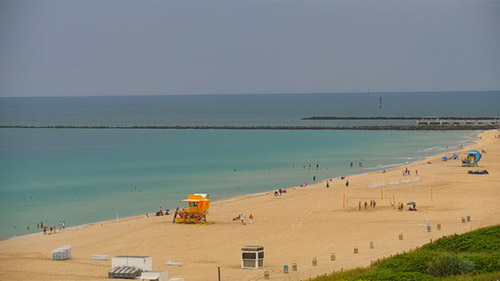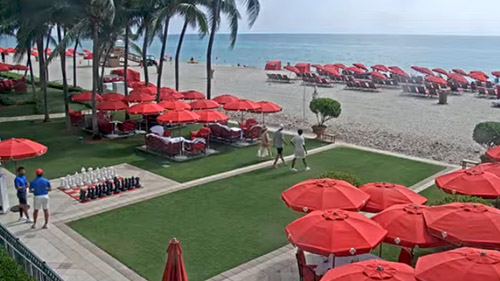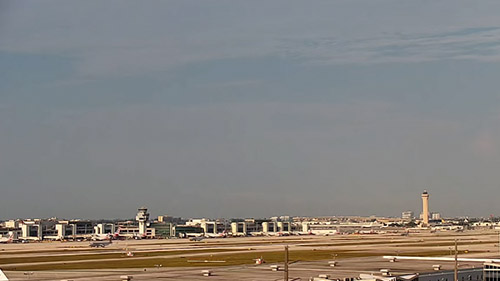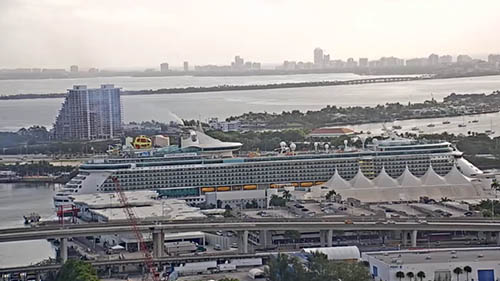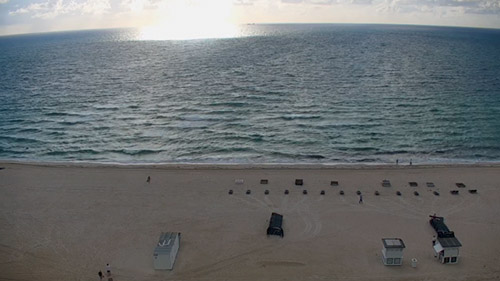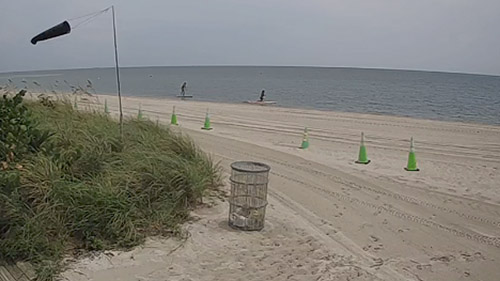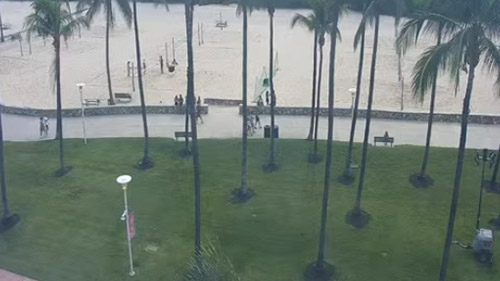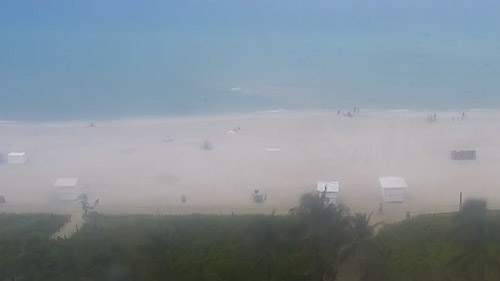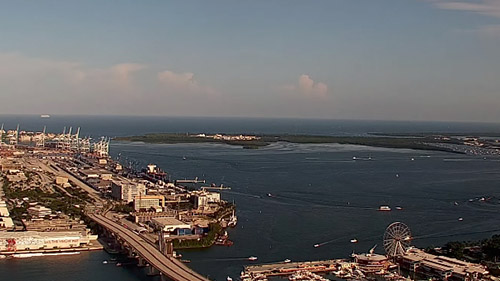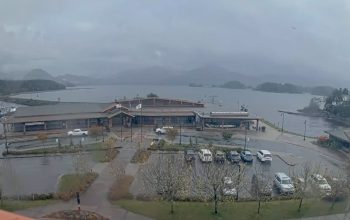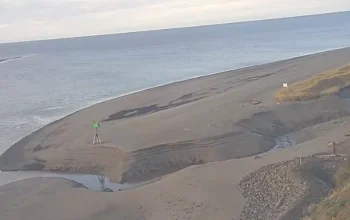Miami Florida Webcams: See the City Live
Miami Florida Webcams let you explore Miami before you arrive. You can check the weather, beach conditions, and city views in real time. This helps you plan better and know what to expect.
Explore Miami’s Best Spots
The live Cams In Miami show live footage of South Beach, Downtown Miami, and other famous areas. You can see the waves, watch the skyline, and even check road traffic.
By watching live streams, you can decide the best time to visit the beach, explore the city, or attend events. Webcams make trip planning easier.
Experience Miami Anytime
Even if you’re not traveling, Miami Florida Webcams let you enjoy the city’s beauty from anywhere. Start watching today and plan your dream trip!
Top 5 Things to Do in Miami, FL
Miami is a city full of life, culture, and adventure. Whether you love beaches, art, or unique experiences, this city has something special for you. Here are the top five things you must do when visiting Miami.
1. Relax at Miami Beach & South Beach
No trip to Miami is complete without visiting its stunning beaches. Miami Beach, a long stretch of soft white sand, is perfect for sunbathing, swimming, or just enjoying the view of the Atlantic Ocean.
Why Visit?
- Crystal-clear waters: The ocean is warm and inviting year-round.
- Vibrant atmosphere: Expect a mix of locals, tourists, and street performers.
- Water activities: Try jet skiing, paddleboarding, or parasailing.
South Beach, the most famous part of Miami Beach, is known for its energy and iconic Art Deco buildings. Walk along Ocean Drive, where palm trees line the street, and enjoy delicious food at a sidewalk café. If you love nightlife, South Beach is home to some of the best clubs and bars in the world.
Tip: Arrive early to grab a good spot on the beach, especially on weekends!
2. Explore the Wynwood Walls
If you love street art, Wynwood Walls is a must-visit. This open-air museum features massive murals created by famous artists from around the world.
What Makes It Special?
- Ever-changing murals: Artists regularly update the walls, so there’s always something new to see.
- Instagram-worthy spots: The colorful artwork makes for perfect photos.
- Art galleries & cafes: Explore local art galleries and grab coffee at one of the trendy cafés.
Beyond the walls, the entire Wynwood neighborhood is filled with art, shops, and great restaurants. Visit at night to see the area come alive with live music, food trucks, and events.
Tip: Visit during the second Saturday of the month for the Wynwood Art Walk, where the whole district turns into a street party.
3. Discover Little Havana
Experience Miami’s Cuban culture in Little Havana, the heart of the city’s Cuban-American community. Walk down Calle Ocho (8th Street), where Cuban music fills the air, and the smell of fresh coffee and cigars creates an unforgettable atmosphere.
Things to Do in Little Havana:
- Try Cuban food: Enjoy authentic Cuban sandwiches, empanadas, and pastelitos. Visit Versailles, Miami’s most famous Cuban restaurant.
- Sip Cuban coffee: Order a cafecito (strong Cuban espresso) from a ventanita (small walk-up window).
- Watch domino games: Stop by Domino Park to see locals playing intense games of dominoes.
Little Havana is also home to the Tower Theater, one of Miami’s oldest theaters, where you can catch independent and Latin films. If you’re in town in March, don’t miss the Calle Ocho Festival, a massive street party with live music and dancing.
Tip: Visit in the afternoon when the restaurants and bars are buzzing with life.
4. Visit the Vizcaya Museum & Gardens
Step into a different era at Vizcaya Museum & Gardens, a European-style villa surrounded by stunning gardens. Built in the early 1900s, this mansion feels like something out of a fairy tale.
What You’ll Love:
- Beautiful architecture: Inspired by Italian Renaissance villas, every room is filled with historic furniture and artwork.
- Lush gardens: Walk through perfectly manicured gardens with fountains and sculptures.
- Peaceful escape: It’s a quiet and relaxing place away from Miami’s busy streets.
Vizcaya sits right on Biscayne Bay, offering breathtaking water views. The estate was originally the winter home of James Deering, a wealthy businessman, and now serves as a museum open to the public.
Tip: Arrive early to avoid crowds and get the best photos.
5. Take an Airboat Ride in Everglades National Park
If you’re looking for adventure, take a trip to Everglades National Park, just a short drive from Miami. The Everglades is a vast wetland filled with unique wildlife, including alligators, turtles, and rare birds.
Why It’s Worth the Trip:
- Exciting airboat tours: Glide across the water at high speed while spotting wildlife.
- Up-close alligator encounters: Many tours include live alligator shows.
- Nature & hiking trails: If you prefer a slower pace, walk along boardwalks to see the beauty of the Everglades up close.
The Everglades is one of the most unique ecosystems in the world and a must-visit for nature lovers.
Tip: Wear sunscreen and bring bug spray, especially in the summer!
Miami is a city full of energy, culture, and adventure. Whether you’re relaxing on the beach, exploring art, or taking an airboat ride, there’s something for everyone. Plan your trip and experience the best of Miami!
The History of Miami, Florida
Miami’s history is rich and diverse, shaped by Indigenous people, European explorers, and waves of immigrants. From its early days as a small settlement to its rise as an international city, Miami has experienced remarkable growth and change.
The Tequesta: Miami’s First Inhabitants
For nearly 2,000 years, the Tequesta people lived in what is now Miami. They built villages along the Miami River, with one large community dating back to 500–600 BCE. The Tequesta survived by fishing, hunting, and gathering.
Unlike other Native American groups, they had limited contact with European settlers at first. But diseases and conflicts eventually weakened their population. By the mid-1700s, most of the remaining Tequesta had migrated to Cuba.
Spanish and British Control
Spain Claims Miami
In 1566, Pedro Menéndez de Avilés, the first governor of Florida, claimed the land for Spain. The Spanish built a mission in the area the following year, but it failed to attract settlers. For years, the region remained largely unsettled.
Brief British Rule and U.S. Takeover
Spain controlled Florida for most of the next two centuries, but Britain briefly took over in the 1700s. Eventually, Spain regained control before ceding Florida to the United States in 1821.
Fort Dallas and the Seminole Wars
A Military Outpost
In 1836, the U.S. built Fort Dallas along the Miami River. It served as a base during the Second Seminole War, a conflict between the U.S. government and the Seminole people. Miami became a battleground as American forces attempted to remove the Seminoles from Florida.
Many early settlers abandoned the area during the war. It wasn’t until the late 1800s that Miami started to grow again.
The Birth of a City
A City Founded by a Woman
Miami is unique because a woman played a key role in its founding. Julia Tuttle, a wealthy citrus grower, saw potential in the region. She convinced Henry Flagler, a railroad tycoon, to extend his railway to Miami.
The Great Freeze of 1894–1895 destroyed crops across Florida, but Miami’s crops survived. This event helped persuade Flagler to invest in the area. Soon after, Miami’s development accelerated.
Miami’s Official Incorporation
On July 28, 1896, Miami officially became a city with just over 300 residents. Flagler’s Florida East Coast Railway made Miami more accessible, attracting new businesses and settlers.
The 20th Century: Growth and Struggles
Early Population Boom and Racial Tensions
By the early 1900s, Miami’s population included many Bahamian migrants and African Americans, making up about 40% of the residents. However, racism and segregation were deeply rooted in the city.
- Black residents faced harsh discrimination.
- White supremacist groups like the Ku Klux Klan threatened communities.
- Jim Crow laws restricted Black citizens’ rights.
Despite these challenges, African Americans and Caribbean migrants played a major role in building Miami’s infrastructure.
The Roaring Twenties and Economic Collapse
During the 1920s, Miami experienced a real estate boom. Northerners moved south, and developers built homes, hotels, and roads. But the boom ended suddenly due to several factors:
- The 1926 Miami Hurricane caused widespread destruction.
- The Great Depression hit in the 1930s, slowing growth.
World War II and Miami’s Military Role
Miami became a key location during World War II. The U.S. military used the city as a base to defend against German submarines. This brought jobs and a population increase.
By 1940, Miami’s population had grown to 172,172 people. The city expanded rapidly, earning the nickname “The Magic City” because of its seemingly overnight growth.
The Cuban Influence and Political Changes
The Impact of the Cuban Revolution
In 1959, Fidel Castro took power in Cuba. Many wealthy and middle-class Cubans fled the country, seeking refuge in Miami. This migration transformed the city’s culture.
- Little Havana became a hub for Cuban-American life.
- Spanish-speaking businesses and newspapers flourished.
- Miami gained a strong Cuban identity, which remains today.
The 1970s: A Turning Point for Miami
Miami gained national attention in the 1970s for several reasons:
- The city hosted both the Democratic and Republican National Conventions in 1972.
- The Miami Dolphins achieved an undefeated NFL season, making history.
- Cultural and educational institutions expanded, making Miami more attractive to international residents.
Challenges and Growth in the Late 20th Century
Crime and Immigration
Miami faced significant crime and social issues in the 1980s and 1990s. The city struggled with:
- Drug-related violence, due to the rise of drug cartels.
- Increased immigration from Haiti and Latin America, which added cultural diversity but also sparked tensions.
- The devastating impact of Hurricane Andrew in 1992, which caused massive damage.
Despite these challenges, Miami continued to grow economically. It became a major financial hub, attracting businesses and investors from around the world.
Miami Today: A Global City
Today, Miami is an international center for business, tourism, and culture. It is the largest U.S. city with a Cuban-American population and the second-largest Spanish-speaking city after El Paso, Texas.
From its Indigenous roots to its rise as a multicultural metropolis, Miami’s history is a story of resilience, growth, and transformation. Its diverse population and rich heritage make it one of the most unique cities in the United States.
Geography of Miami, Florida
Miami, Florida, sits on the southeastern coast of the United States, offering stunning beaches, rich ecosystems, and a unique geological history. The city’s landscape, climate, and underground foundation shape its environment and influence how people live.
Miami’s Location and Landscape
Miami lies in Miami-Dade County, between the Everglades and the Atlantic Ocean. It covers about 56 square miles and includes both coastal and inland areas. The city is known for its flat terrain, with elevations ranging from 0 to 20 feet above sea level.
The Coastal Features
Miami’s coastline stretches along Biscayne Bay, a shallow lagoon that separates the mainland from barrier islands. These islands, including Miami Beach, help protect the city from ocean waves and storms. The bay itself is home to mangroves, seagrass beds, and coral reefs, creating a rich marine ecosystem.
The Everglades Connection
To the west, the Everglades acts as a natural buffer, providing fresh water and supporting diverse wildlife. This vast wetland is a slow-moving river that filters rainwater before it reaches Biscayne Bay and the ocean.
The Geology of Miami
Miami’s foundation is made up of limestone, a type of rock formed from ancient marine life. Over thousands of years, corals, shells, and other ocean organisms settled on the seafloor. Their remains compacted, creating the Miami Limestone Formation, which serves as the city’s bedrock.
Limestone and the Water Supply
Limestone is porous, meaning it absorbs and holds water. Beneath Miami, the Biscayne Aquifer stores fresh water and supplies drinking water to the city. Since this aquifer is close to the surface, it is vulnerable to pollution and saltwater intrusion from rising sea levels.
Sinkholes and Ground Stability
Unlike some parts of Florida, Miami has fewer sinkholes. The limestone bedrock here is denser, making the ground more stable. However, erosion and water movement underground can still create small cavities.
Climate and Weather Patterns
Miami has a tropical monsoon climate, meaning it experiences hot, humid summers and warm, dry winters. The Gulf Stream, a warm ocean current, keeps temperatures mild year-round.
Rainy and Hurricane Seasons
From June to November, Miami faces heavy rainfall and the threat of hurricanes. Warm ocean waters fuel these storms, bringing strong winds, flooding, and storm surges. Miami’s flat landscape makes it especially vulnerable to flooding during extreme weather events.
Sunny Winters
Winters in Miami are warm and dry, with temperatures averaging around 70°F. Many visitors escape colder climates to enjoy Miami’s beaches and outdoor activities during this season.
Sea Level Rise and Environmental Challenges
Flooding Risks
Since Miami sits just above sea level, it is one of the most vulnerable cities to flooding. Rising sea levels push saltwater into underground water systems, leading to saltwater intrusion in the aquifer. This threatens Miami’s drinking water supply.
During heavy rains or high tides, king tides can flood streets, even on sunny days. To combat this, Miami has installed pump systems, raised roads, and sea walls in some areas.
Coastal Erosion
Beaches in Miami face constant erosion from waves, storms, and rising waters. To maintain the shoreline, the city often renourishes beaches by adding sand from offshore sources.
Miami’s Unique Ecosystems
Biscayne Bay and Coral Reefs
Biscayne Bay supports a diverse marine ecosystem, including manatees, dolphins, and sea turtles. Offshore, coral reefs act as natural barriers, reducing wave energy and protecting the coast. However, pollution, climate change, and ocean acidification threaten these reefs.
Mangroves and Wetlands
Mangrove forests grow along Miami’s coastline, providing habitat for fish and birds. These trees also help prevent coastal erosion by stabilizing the shoreline. Wetlands in and around the city filter water and reduce flood risks.
Miami’s geography and geology make it a beautiful yet vulnerable city. Its coastal location, limestone foundation, and tropical climate create both opportunities and challenges. As sea levels rise and extreme weather events increase, Miami continues to find ways to adapt and protect its future.
The Economy of Miami, Florida
Miami has grown into a major center for commerce, finance, and international trade. Its strategic location, connecting North America with Latin America and the Caribbean, has made it a hub for global business operations. With a strong tourism industry, expanding real estate market, and international banking presence, Miami plays a crucial role in the U.S. economy. However, the city also faces challenges such as income inequality, housing affordability, and economic disparities among residents.
A Global Business Hub
Miami ranks as a Beta+ world city, according to the Globalization and World Cities Research Network (GaWC). This ranking places it in the same category as Atlanta, Dallas, and Houston. The city attracts multinational corporations, tech startups, and financial institutions due to its business-friendly environment and diverse workforce.
Many global companies establish their Latin American headquarters in Miami. This gives them easy access to the region while benefiting from the city’s infrastructure, bilingual workforce, and strong trade networks.
Key Business Sectors
Several industries drive Miami’s economy, including:
- Tourism and Hospitality
- International Trade and Logistics
- Real Estate and Construction
- Finance and Banking
- Media and Entertainment
- Technology and Startups
These sectors create thousands of jobs and keep Miami at the center of international commerce.
Tourism and Hospitality
Tourism is one of Miami’s largest economic drivers. Each year, millions of visitors come to enjoy the city’s beaches, nightlife, and cultural attractions. The warm climate and vibrant entertainment scene make Miami a popular destination for both domestic and international travelers.
Top Attractions
- South Beach and Ocean Drive
- Wynwood Walls and Art District
- Little Havana and Cuban Culture
- Bayside Marketplace and Biscayne Bay
- Miami Seaquarium and Zoo Miami
Miami also hosts world-famous events, such as:
- Art Basel Miami Beach
- Miami International Boat Show
- Ultra Music Festival
- Miami Open Tennis Tournament
These events bring in millions of dollars in revenue each year. The city’s hotel, restaurant, and nightlife industries benefit greatly from high tourist demand.
Trade and Transportation
Miami serves as a gateway for trade between the U.S., Latin America, and the Caribbean. Its transportation infrastructure supports massive amounts of cargo, imports, and exports.
PortMiami: The Cruise Capital of the World
PortMiami is the busiest cruise port on the planet. Millions of passengers embark from here every year, benefiting cruise lines, local businesses, and tourism-related services. The port is also a major hub for container shipping, handling goods from around the world.
Miami International Airport (MIA)
MIA is the largest U.S. gateway to Latin America and the Caribbean. It is also Florida’s busiest airport for both passenger and cargo traffic. MIA connects businesses and travelers to more than 160 global destinations.
With strong air and sea connections, Miami plays a crucial role in global trade and logistics.
Real Estate and Construction
Miami has experienced multiple real estate booms over the decades. The city’s skyline has transformed with the construction of luxury condominiums, office buildings, and high-rise hotels.
Skyscraper Growth
During the mid-2000s, Miami saw its largest construction boom since the 1920s. More than 100 high-rise projects were approved, but only about 50 were completed. Today, Miami boasts:
- The seven tallest buildings in Florida
- Fifteen of the twenty tallest skyscrapers in the state
- Panorama Tower, the tallest at 868 feet (265 meters)
Housing Market Challenges
The 2007 housing market crash led to a foreclosure crisis in Miami. Home prices dropped, and many residents struggled with mortgage payments. While the market has since recovered, affordable housing remains a challenge.
Miami’s high demand for luxury real estate drives up property values, making it difficult for middle and low-income families to buy homes.
Media and Entertainment
Miami is the capital of Spanish-language media in the U.S. Several major networks operate from the city, including:
- Telemundo
- Univisión
- UniMás
These networks produce telenovelas, news programs, and sports coverage. In fact, 85% of Telemundo’s original programming is filmed in Miami.
Miami is also a major hub for the music industry. Many Latin artists record and produce their music here. Sony Music Latin and several independent record labels operate from Miami, attracting musicians from around the world.
Finance and Banking
Miami has one of the largest concentrations of international banks in the U.S. Many financial institutions have regional headquarters along Brickell Avenue, which is often called “Wall Street South”.
The city’s banks specialize in:
- Trade financing
- Wealth management
- Investment services
Due to Miami’s strong ties with Latin America, it remains an important center for global banking and finance.
Technology and Startups
Miami is becoming a growing tech hub, attracting entrepreneurs and investors. Many companies move to Miami because of:
- No state income tax
- Access to Latin American markets
- A diverse, bilingual workforce
Several big names have expanded in Miami, including:
- SoftBank
- Blackstone
- Founders Fund
Startups in fintech, blockchain, and health tech continue to grow in the city. With increased venture capital investment, Miami’s tech scene is rapidly expanding.
Economic Challenges
Income Inequality and Poverty
Despite Miami’s success, many residents struggle financially. The city ranks low in:
- Homeownership rates
- Median household income
- Education levels (bachelor’s degree or higher)
According to the U.S. Census, Miami has a higher percentage of people living in poverty compared to other major cities. In 2012, it ranked fourth highest in the nation for family incomes below the federal poverty line.
Cost of Living and Housing Affordability
Miami’s cost of living continues to rise, making it harder for residents to afford housing. Rent prices have increased, and wages have not kept up with inflation. The city is working on affordable housing solutions, but the issue remains a major challenge.
Miami’s economy is dynamic and diverse, fueled by tourism, trade, finance, real estate, and media. Its position as a global business hub keeps it competitive, attracting multinational companies, startups, and investors. However, the city must address challenges such as income inequality, housing affordability, and economic disparity to ensure long-term prosperity.
Despite these obstacles, Miami remains one of the most influential cities in the world, shaping the future of business, culture, and innovation.
